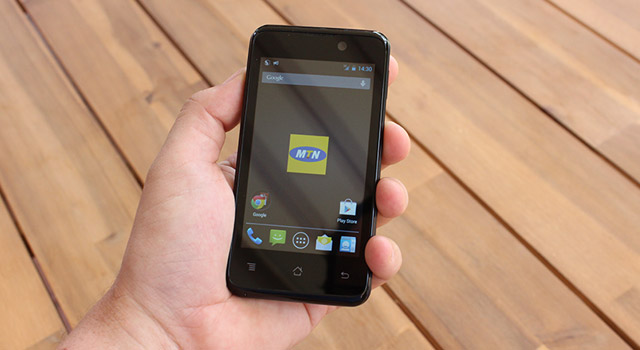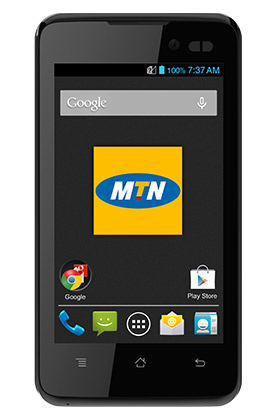
We have seen a number of good, low-cost smartphones hitting the market in the past year as network operators and manufacturers attempt to convert feature-phone users to a more updated platform, while unlocking the huge potential that smartphones hold for mobile data usage.
It’s not just a clever business strategy for operators, but consumers benefit, too, as many of them get online for the first time with these devices.
Last year’s MTN Steppa was a 3,5-inch LCD smartphone with a 1GHz single-core processor with 512MB of RAM and 1GB of storage space. It also had a 2-megapixel rear camera and no front-facing lens.
Although it hit the right price point — R499 — the first edition showed lag when running certain applications. Now MTN is back for another go, with an improved Steppa, with better hardware all round, barring the memory, which remains a paltry 512MB. With memory being one of the most expensive components in any device, it’s understandable why low-cost smartphones often come up short in this department, but more on this later.
Aesthetically, the Steppa 2 is a good looking smartphone that won’t look dated compared to more expensive devices. It has a thinner profile than the original Steppa and is comfortable to hold. Apart from a larger 4-inch LCD, the Steppa 2 also features a much more detailed display. Albeit only 480×800 pixels, its looks surprisingly sharp. That’s up from 320×480 pixels.
Indeed, the Steppa 2 brings MTN’s low-cost smartphone in line with the build quality and value for money we have come to expect from more midrange devices. The only downside to the screen is the narrower field of view compared to more expensive smartphones, but this is not unique to the Steppa 2 in the space in which it competes.
 The Steppa 2 has a much snappier 1,2GHz dual-core processor with 4GB of storage space which can be expanded by way of a microSD card.
The Steppa 2 has a much snappier 1,2GHz dual-core processor with 4GB of storage space which can be expanded by way of a microSD card.
The camera has also received an upgrade and now snaps 5-megapixel images. The image quality is surprisingly good for a low-cost smartphone, although it battles in low-light conditions. The built-in flash does a good job of rectifying that problem, but subjects need to be close to the lens for the flash to have any real effect.
The power button, situated within thumb’s reach on the right side of the phone and the volume rocker on the left feel responsive and not as cheap as those on the original Steppa. It’s good to see MTN also moving away from the plastic chrome finish that tainted the look of its predecessor.
The battery has received a minor upgrade, rated at 1 500mAh from 1 300mAh before. On a full charge, expect to get about a day’s worth of use if you are a moderate user. The Steppa 2 also seems quite efficient on power when the screen is not on.
Although the Steppa 2 still runs the older Android 4.3 operating system, an upgrade to Android 4.4 is expected. For connectivity, the Steppa 2 supports Bluetooth, Wi-Fi and 3G (HSPA+) up to 42Mbit/s.
The only real downside with the Steppa 2 is the number of apps that come preloaded with the phone, including AVG antivirus, Amazon Kindle, three games and a games hub. Facebook and Twitter are also there. Ideally, low-cost smartphones need to be bloatware-free. As capacity on these devices is already scarce, the bloatware is unwanted.
The Steppa 2 will be launched on 22 November and MTN has said it will retail for R999. It will come with 200MB of data per month for 12 months. In comparison, last year’s model retailed for R499. Although this means the Steppa 2 is not as affordable as it once was, it is hard to fault what you get for less than a grand. If MTN had upped the Steppa 2’s RAM, it would have been onto a real winner. — © 2014 NewsCentral Media

